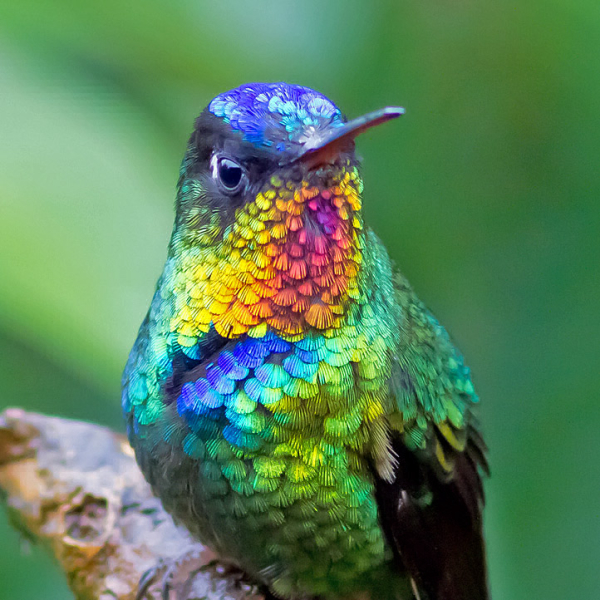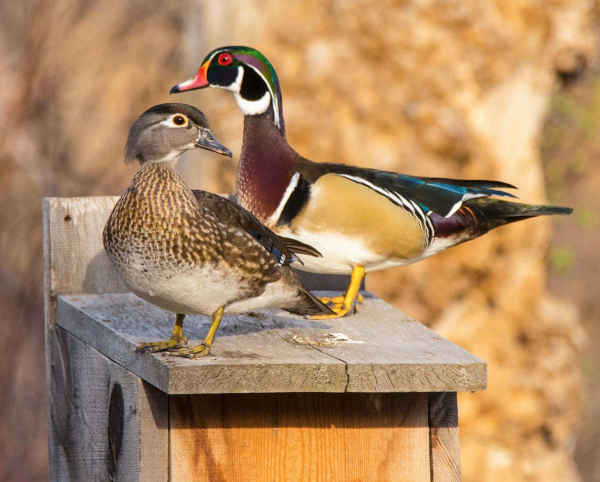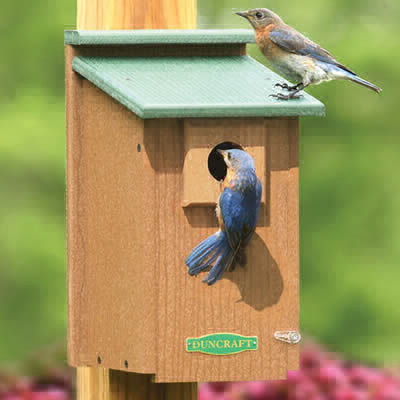The Kirtland’s warbler: June’s Migratory Bird Treaty Centennial featured bird

The Kirtland’s warbler is one of Michigan’s special creatures, an international traveler who calls the Great Lakes area – and nowhere else on Earth – its summertime home. Ninety-nine percent of the world’s Kirtland’s warblers nest here, making their success story unique to Michigan!Kirtland’s warblers are small birds, roughly the size of a tufted titmouse. The males have blueish-gray backs, yellow bellies and chins, and whitish undertail feathers. Their faces sport a bright, broken white eye ring and a black patch in front of the eye. The female birds are duller grey on their backs and lack the black face markings.
The Kirtland’s warbler is among the rarest wood warblers in North America. It nests mainly in young jack pine forests on public lands near the Au Sable River drainage and winters in the Bahamas. The males return to Michigan in early to mid-May, a few days ahead of the females. The males establish and defend territories and then court the females when they arrive. The males’ song is loud, yet low-pitched.
Kirtland’s warblers have very specific habitat requirements; they prefer large blocks of young jack pine, usually hundreds of acres in size. The Kirtland’s warbler is a ground-nester, often using the living branches of five- to 20-foot-tall jack pine trees to conceal their nests. Because of these specific requirements, stands of jack pine trees must be actively managed. Large areas of sandy soils are planted with jack pine and then cut decades later, on specific intervals, to achieve the perfect-aged stands. Jack pine is an important resource for the timber industry.
In 1973, the Kirtland’s warbler was one of the original species to be listed as part of the 1973 Endangered Species Act. In 1976, the first Kirtland’s Warbler Recovery Plan was developed, and then updated in 1985, providing state and federal agencies with a guide to direct management efforts toward increasing the Kirtland’s warbler population.
The primary recovery objective is to establish and sustain a Kirtland’s warbler population throughout its known range at a minimum level of 1,000 pairs. A Kirtland’s warbler census allows wildlife managers to determine if the number of nesting birds is staying stable, increasing or decreasing. Biologists, researchers and volunteers walk transects in jack pine forests in May and June and count the number of singing males in the area. One singing male translates to one pair of warblers, as most males find a mate and breed.
Through the Kirtland’s warbler census, Michigan has been able to report having greater than the minimum level of 1,000 pairs from 2002 to the present. In 2013, biologists, researchers and volunteers observed 2,025 singing males during the official survey period. In 2015, 2,365 singing males were observed. This year, 2,307 singing males were found in 13 northern Lower Peninsula counties.
Because of the efforts of many management partners – like the U.S. Fish and Wildlife Service, U.S. Forest Service, Michigan Department of Military Affairs, Wisconsin Department of Natural Resources, The Kirtland’s Warbler Alliance, The Nature Conservancy, Huron Pines, Bahamas National Trust, Environment Canada, Canadian Department of National Defense and many others – Kirtland’s warbler numbers have been increasing steadily over the last decade.
Some of these partners offer opportunities for the public to view Kirtland’s warblers with the help of a guide. Tours opportunities still remain to view Kirtland’s warblers through July 4:
- Grayling: now through July 4. Tours led by the Michigan Audubon Society are held Monday through Friday starting at 7 a.m., and Saturday and Sunday at 7 and 11 a.m. The tours start at Hartwick Pines State Park. For more information, visit www.michiganaudubon.org.
- Oscoda: now through July 3. Tours will take place beginning at 8 a.m. Fridays, Saturdays and Sundays, starting at Camp Inn Lodge. More information is available at www.CampInnLodge.com.
To learn more about the Kirtland’s warbler and how to help, visit www.michigan.gov/wildlife.
The year 2016 marks the centennial of the Convention between the United States and Great Britain (for Canada) for the Protection of Migratory Birds (also called the Migratory Bird Treaty), signed on Aug. 16, 1916. Three other treaties were signed shortly thereafter with Japan, Russia and Mexico. The Migratory Bird Treaty, the three other treaties signed later, and the Migratory Bird Treaty Act form the cornerstones of efforts to conserve birds that migrate across international borders.
The 2016 Migratory Bird Treaty Centennial celebration will include monthly featured bird stories to our DNR Wildlife Viewing email subscribers, celebration events including a weekend of bird-based programming at state parks and visitor centers in June, an education program for schools and conservation groups, and more!
To learn more about the Migratory Bird Treaty Centennial, visit www.fws.gov/birds/MBTreaty100/. To sign up for DNR Wildlife Viewing emails, visit www.Michigan.gov/dnr and click on the red envelope.







